Australian Tropical Rainforest Plants - Online edition
Notothixos leiophyllus K.Schum.


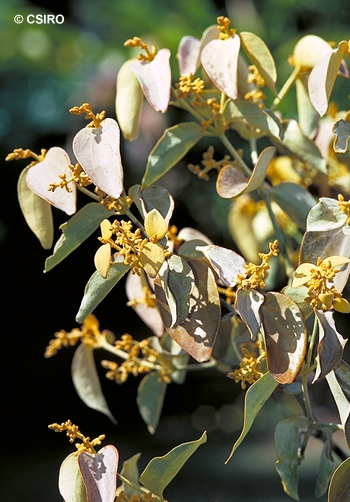
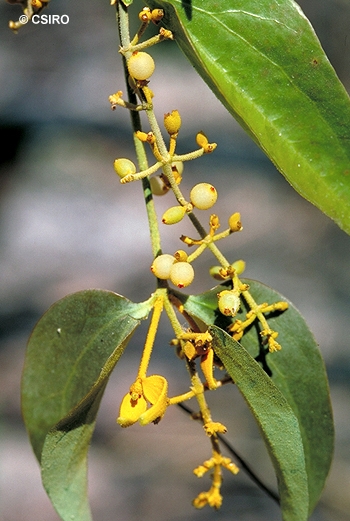
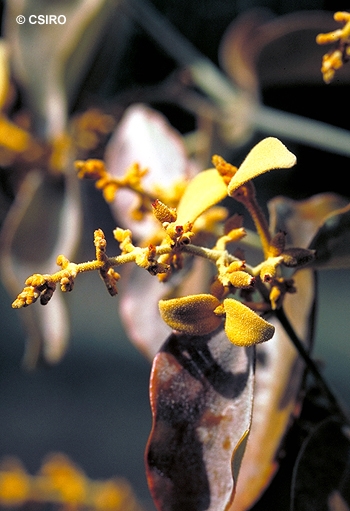
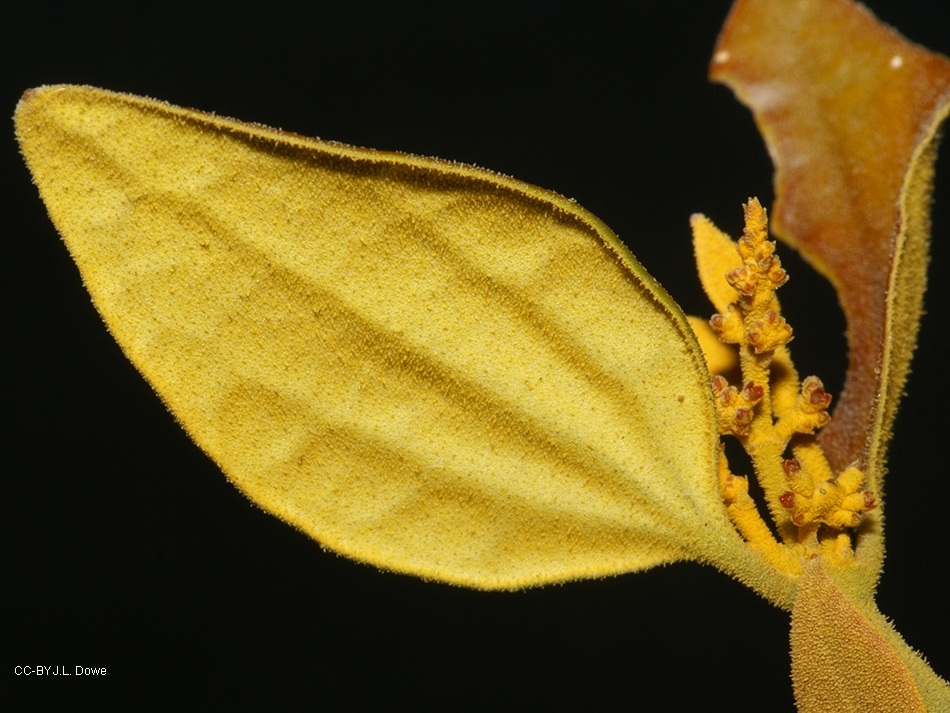
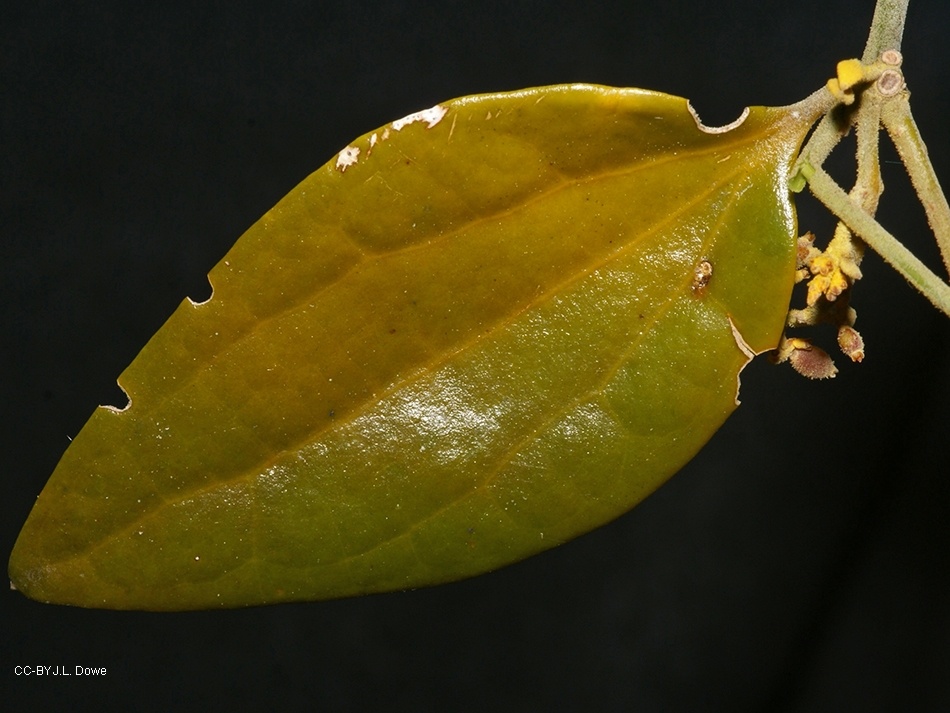
Schumann, K.M. & Lauterbach, C.A.G. (1905) Fl. Schutzgeb. Sudsee Nachtr. : 260. Type: New Britain, 1885, Parkinson 105; Lecto: K, Fide Barlow (1983) Brunonia 6: 15; Iso: NSW.
Leaf blades brittle, breaking along a straight line when bent back on themselves. Leaf blades about 4-11 x 3-6 cm, petioles about 0.4-0.8 cm long. Leaf blades usually 3-veined, sometimes 5-veined. Terminal buds and young leaves clothed in golden plumose hairs. The upper surface of the leaf blades eventually becomes almost glabrous.
Inflorescence parts and flowers densely clothed in golden plumose or dendritic hairs, each hair resembling a miniature pine tree. Flowers borne in clusters (cymules) of 5-9 flowers. Central flowers (0-3) usually male. Male flowers: Flowers about 1-2 mm diam. Perianth lobes about 0.7 mm long. Stamens attached outside a fleshy disk. Anthers about 0.25 mm diam., staminal filaments very short. Female flowers: Flowers about 1-2.5 mm long. Tepals about 0.3-0.5 mm long. Style absent or very short. No locules or ovules visible in the ovary.
Fruits ellipsoidal or globular, up to 7-8 x 4.5 mm, tepals persistent at the apex. Fruits clothed in branched hairs each of which resembles a miniature pine tree. Seeds laterally compressed (flattened) about 2.5-7 x 1.5-3 mm, slightly pointed at one end and more or less rounded at the other. Seeds immersed in a sticky, gelatinous mucilage. Testa surface finely reticulate. Endosperm green, embryo darker green. Embryo comet-shaped, about 1.5-2 mm long, cotyledons very short, not as wide as the radicle.
Features not available.
Food plant for the larval stage of the Yellow-banded Jezabel Butterfly. Braby, M. (2000).
Parasitic on a variety on rain forest plants particularly Canarium and various species in Rutaceae.





